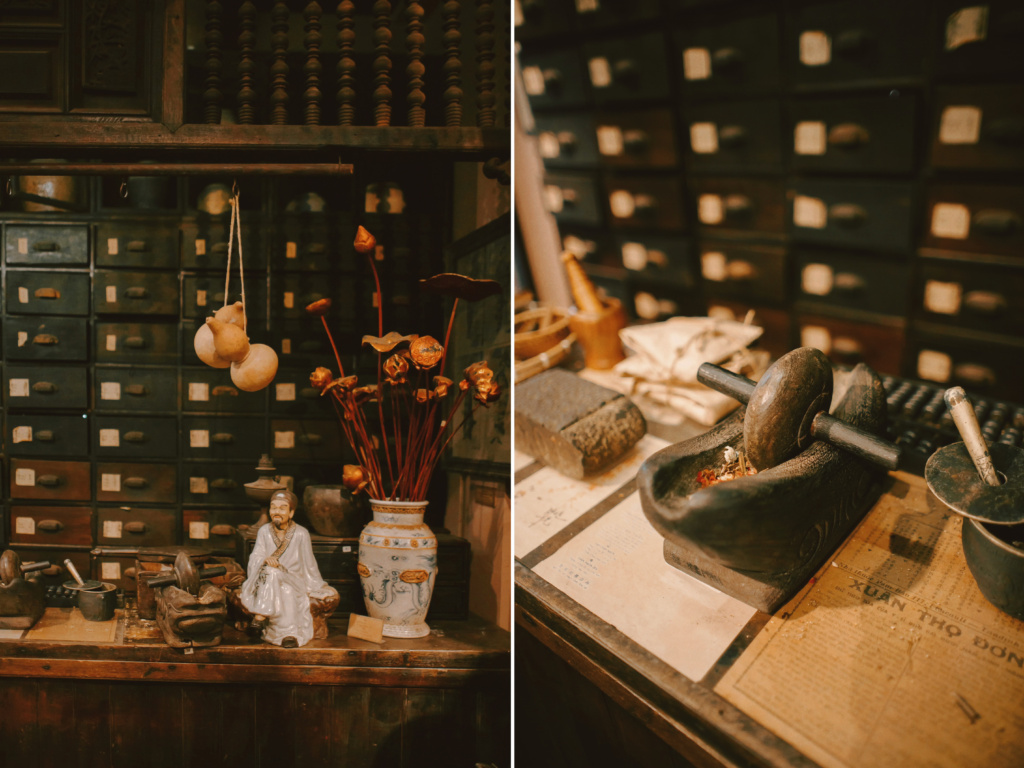
Ho Chi Minh city is usually the first or last place you’ll visit when coming to Vietnam and this city is also a city of vibrant energy, rich history, and captivating culture. In addition to its famous landmarks and bustling city life, HCMC is also home to several hidden gems that are worth discovering.

Mentioning museums in Ho Chi Minh City, many people would come up with the famous Fine Arts Museum or War Remnants Museum. However, there is one museum that is not as well-known as others, but it is a worthy addition to your Saigon itinerary: FITO Museum (also known as the Museum of Traditional Vietnamese Medicine). Offering a one-of-a-kind look into Vietnamese herbal medicine, this museum is one of the best places to visit in Ho Chi Minh city.
Located at No. 41, Hoang Du Khuong Street, Ward 12, District 10, the FITO Museum is a unique place for those interested in traditional Vietnamese medicine. Dedicated to showcasing the history of Vietnamese traditional medicine, FITO offers visitors an insightful journey into the country’s rich cultural heritage.

Entry fee is a 180,000 VND ($9). Housed in a beautifully restored French colonial building, the museum showcases a vast collection of artifacts, ancient remedies, and exhibits that highlight the country’s traditional healing methods.

At first glance, the most captivating aspect of the Museum of Traditional Vietnamese Medicine is its architectural style. The museum building showcases the intricate craftsmanship of late 19th-century Vietnamese houses, as it incorporates reclaimed wooden frames from old houses across Vietnam.

The idea seemed to feel like more like a home you might find in the North, mixed with various aspects of Hue style. Up top, the Cham Tower is a representation of the Cham style from Central Vietnam and Cambodia.

The wooden staircase railings are made from dark ebony wood. Columns, beams, and stair railings are all intricately carved, and even the elevator is wood-paneled and delicately engraved with patterns, crafted by artisans over the years.

The museum boasts a serene and tranquil ambiance. A nostalgic feeling rushes in as you stand in the middle of a spacious and imposing wooden house, both dignified and warm with the scent of herbs and wood.

The building has 6 floors, each with its own distinctive style and decorations, and houses 18 different exhibition rooms. You can choose to take the tour on your own or with a guide. Most rooms contain tools and decorative storage containers for the medicinal herbs. Ancient Vietnamese used these stone tools to prepare medicine. Charts and journals adorn the walls.

There is also a room which is set up much like a pharmacy would be 100 years ago, showcasing the traditional way of preparing herbal medicines.

There is also a Medicinal Liquor Showroom. Soaking medicinal herbs in alcohol is an ancient method of preparing medicines. Ancient people believed that medicinal liquor had the effect of invigorating blood circulation and balancing the body’s vital energy.

The charm of this museum lies not in its contents, but in its design. The whole place provides a serene escape from the bustling city and allows visitors to engage with the exhibits at their own pace.

Visiting the FITO Museum is not only a chance to learn about traditional Vietnamese medicine but also an opportunity to appreciate the country’s cultural heritage. It offers a unique window into Vietnamese healthcare beliefs that is deeply ingrained in the local customs and practices.

FITO is a place where history, culture, and the art of healing converge within the walls of an intricately designed traditional Vietnamese house. Unlike any other museum in Ho Chi Minh City, The Museum of Traditional Vietnamese Medicine is a must see for those who appreciate the beauty in Vietnamese architecture and history, or for those just wanting to experience a little something different.
SAVE THIS POST FOR LATER!

